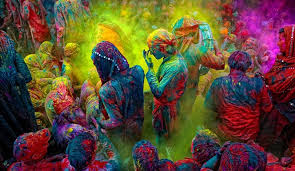If it is not possible to observe the eleventh day of each fortnight of the Hindu calendar, one can at least observe the eleventh day of the bright fortnight.
Worship: On both the ekadashi of Ashadh, Lord Vishnu is worshipped as Shridhar (one of the Names of Lord Vishnu). A lamp of clarified butter (ghee) is kept lit throughout the night of an Ashadhi ekadashi.
Intake: On any ekadashi, one’s intake should be kept limited to only water, and a mixture of dried ginger (suntha) and sugar.
Intake: On any ekadashi, one’s intake should be kept limited to only water, and a mixture of dried ginger (suntha) and sugar.
However, if not possible to do so, one can eat foods allowed during Hindu fasts (upavas).
These foods, being sattvik, do not reduce one’s sattva component, detracting from focus on God (the very aim of a fast – upavas – is to be close to God), unlike rajasik-tamasik foods do. A fast observed on an ekadashi is ended the following day.
The pilgrimage (vari) to the town of Pandharpur in Maharashtra, India: The vowed religious observance of going on a pilgrimage to Pandharpur, the seat of Lord Vitthal, sacred especially to devotees from the Varkari sect, is commenced from the ekadashi of the bright fortnight of the month of Ashadh.
The pilgrimage (vari) to the town of Pandharpur in Maharashtra, India: The vowed religious observance of going on a pilgrimage to Pandharpur, the seat of Lord Vitthal, sacred especially to devotees from the Varkari sect, is commenced from the ekadashi of the bright fortnight of the month of Ashadh.
The Varkari sect is the main sect among the Hindu Vaishnava sects that worship Lord Vishnu.
The devotees from this sect undertake this pilgrimage annually or bi-annually, depending upon the type of initiation they have received.
Since this pilgrimage is carried out on foot it is considered as physical penance, purifying (mainly) the physical body.






